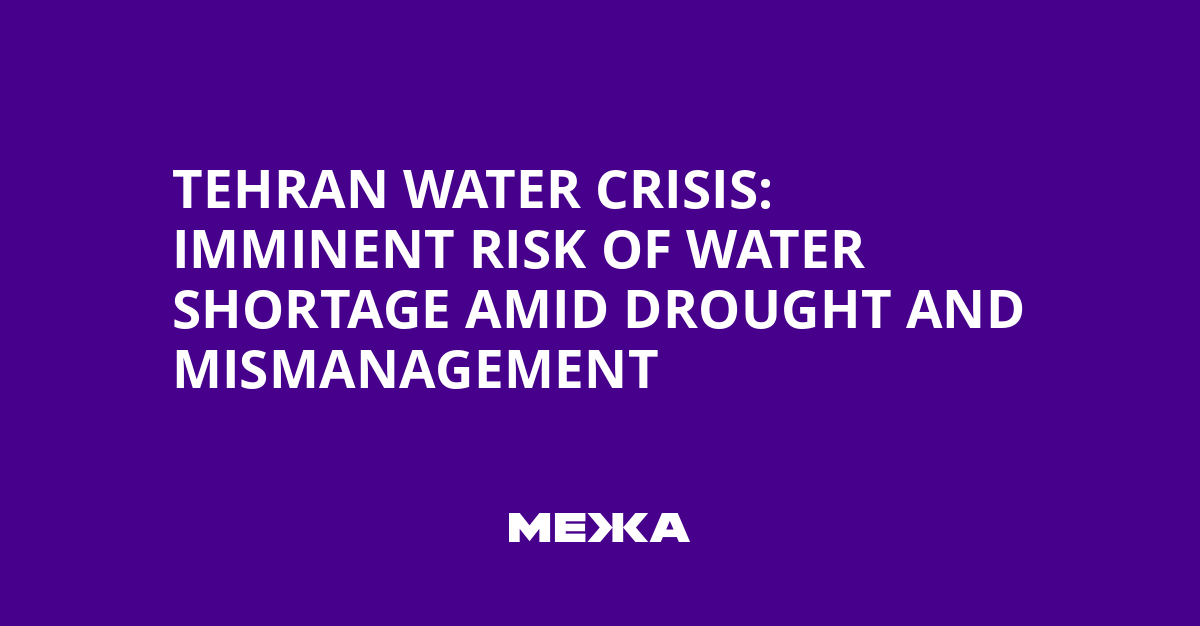Tehran, the capital of Iran, could be on the brink of disaster within a few weeks as water supply may be cut off in many parts of the city. Experts warn of an acute water crisis worsening due to the drying up of key reservoirs, increasing water consumption, and government efforts to reduce its use.
“If we do not take urgent action today, we will face a situation in the future that we will not be able to resolve,”
– President Masoud Pezeshkian
Water has always been scarce in Iran, but the current situation is especially critical for Tehran, home to about 10 million people. Kaveh Madani, director of the UN Institute for Water, Environment and Health, notes that the city could run out of water if consumption is not reduced. “We are talking about a possible zero day within a few weeks,” he emphasizes.
The causes of this crisis are linked to many factors, including decades of poor water resource management and a growing imbalance between demand and supply. Climate change also plays a significant role in worsening the situation.
Iran is experiencing one of the most severe droughts in its history, now entering its fifth year. Abnormal heat, including temperatures above 50 degrees Celsius in some regions, only exacerbates the problem, notes climatologist Maximiliano Herrera.
In response to the crisis, authorities have reduced water pressure in Tehran by nearly half, affecting 80% of households. For residents of high-rise buildings, this often means a complete lack of water. One resident on the 14th floor reports frequently having no water from the taps.
Water is being delivered to the city by tanker trucks, and those who can afford it are installing storage tanks. “We have never faced such a situation before… this is new for Tehran,” adds Madani.
Last week, the government declared a one-day holiday in Tehran province to save water and electricity. There is also consideration of granting residents a week-long holiday, hoping this will reduce water demand.
Experts point to mismanagement as one of the main causes of the crisis. Excessive use of groundwater, inefficient agriculture, and uncontrolled water consumption have led to “water bankruptcy,” says Professor Amir AghaKouchak.
“This is water bankruptcy, because this is no longer a crisis… it is a situation where some damages are irreversible.”
– Amir AghaKouchak
In Tehran, groundwater is being pumped so intensively that some parts of the city are sinking by more than 25 centimeters per year. The capital faces a systemic imbalance that threatens the water security of its residents.
Climate change only worsens the situation. This year, Iran received 40% less rainfall than the long-term average, and the dams supplying water to Tehran are only 21% full.
All but one of Iran’s 31 provinces are experiencing water shortages. Iran’s Minister of Energy, Abbas Aliabadi, expressed hope that water rationing will not be necessary.
Experts acknowledge there are no easy solutions to this crisis. The government is resorting to temporary measures such as new water transfer projects. Technical solutions like desalination and wastewater recycling must be part of the strategy, but “they only temporarily relieve symptoms without addressing the cause,” Madani notes.
He calls for a radical economic reform to reduce dependence on water-intensive agriculture, which consumes about 90% of Iran’s water resources. Such changes may be painful and costly, especially under the current government and sanctions.
The roots of the crisis are not only environmental but also “deeply political and systemic,” emphasizes AghaKouchak. “Iran’s water crisis is inseparably linked to a broader governance crisis.”
The country is hoping for autumn rains that could help avert disaster.
“If Tehran survives until the end of September, then there is hope to avoid the zero day,”
– Kaveh Madani
